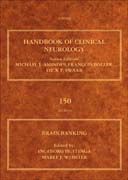
Brain Banking of Neurological and Psychiatric Diseases, Volume 150 serves as the only book on the market to offer comprehensive coverage of the functional realities of brain banking. Focus includes: brain donor recruitment strategies, brain bank networks, ethical issues, brain dissection/tissue processing/tissue dissemination, neuropathological diagnosis, brain donor data, and techniques in brain tissue analysis. In accordance with massive initiatives, such as BRAIN and the EU Human Brain Project, abnormalities and potential therapeutic targets of neurological and psychiatric disorders need to be validated in human brain tissue, thus requiring substantial numbers of well characterized human brains of high tissue quality with neurological and psychiatric diseases. Offers comprehensive coverage of the functional realities of brain banking, with a focus on brain donor recruitment strategies, brain bank networks, ethical issues, and moreServes as a valuable resource for staff in existing brain banks by highlighting best practicesEnhances the sharing of expertise between existing banks and highlights a range of techniques applicable to banked tissue for neuroscience researchersEdited work with chapters authored by leaders from brain banks around the globe - the broadest, most expert coverage available INDICE: Section I. Brain Donor Recruitment Strategies1. The Netherlands Brain Bank for Psychiatry2. Brain donation procedures in the sudden death brain bank in EdinburghSection II. Brain Bank Networks3. Autism BrainNet 4. The NIH NeuroBioBank: creating opportunities for human brain researchSection III. Ethical and Religious Aspects of Brain Banking and Management of Brain Banks5. Ethical and legal issues in brain banking 6. A review of brain biorepository management and operations7. Long term financial sustainability of brain banksSection IV. Brain Dissection, Tissue Processing & Tissue Dissemination8. Brain dissection protocols 9. Neurochemical markers as potential indicators of post-mortem tissue qualitySection V. Neuropathological Diagnosis10. Minimal neuropathological diagnosis for brain banking in the normal middle aged and aged brain and in neurodegenerative disorders 11. Brain donation at autopsy: Clinical characterization and toxicological analysesSection VI. Brain Donor Data: Clinical, Genetic, Radiologic and Research Data Storage and Mining12. Information technology for brain banking 13. Collecting, storing and mining research data in a brain bank 14. What can we learn about brain donors? Use of clinical information in human postmortem brain research15. The art of matching brain tissue from patients and controls for postmortem researchSection VII. Human Brain Tissue Analyses: Old and New Techniques16. Considerations for optimal use of postmortem human brains for molecular psychiatry: Lessons from schizophrenia17. Epigenetic analyses of human brain tissue 18. Laser microdissection and gene expression profiling in the human postmortem brain19. Purification of cells from fresh human brain tissue: Primary human glial cells20. Proteomics and lipidomics in the human brain 21. 3-D imaging in the post-mortem human brain with CLARITY and CUBIC 22. Neuronal life after death: electrophysiological recordings from neurons in adult human brain tissue obtained through surgical resection or post-mortem23. Post-mortem magnetic resonance imaging24. Cyto- and receptorarchitectonic mapping of the human brain25. Mapping pathological circuitry in schizophrenia
- ISBN: 978-0-444-63639-3
- Editorial: Elsevier
- Encuadernacion: Cartoné
- Páginas: 600
- Fecha Publicación: 01/03/2018
- Nº Volúmenes: 1
- Idioma: Inglés
